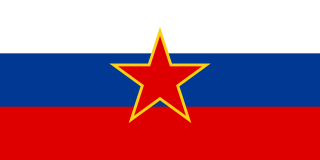 W
WThe Socialist Republic of Slovenia, commonly referred to as Socialist Slovenia or simply Slovenia, was one of the six federal republics forming the post-World War II country of Yugoslavia and the nation state of the Slovenes. It existed under various names from its creation on 29 November 1945 until 25 June 1991. In 1990, while the country was still a part of the Yugoslav federation, the League of Communists of Slovenia allowed for the establishment of other political parties, which led to the democratization of the country.
 W
WThe Austrian Empire was a Central European multinational great power from 1804 to 1867, created by proclamation out of the realms of the Habsburgs. During its existence, it was the third most populous empire after the Russian Empire and the United Kingdom in Europe. Along with Prussia, it was one of the two major powers of the German Confederation. Geographically, it was the third largest empire in Europe after the Russian Empire and the First French Empire. Proclaimed in response to the First French Empire, it partially overlapped with the Holy Roman Empire until the latter's dissolution in 1806.
 W
WAustro-Slavism was a political concept and program aimed to solve problems of Slavic peoples in the Austrian Empire.
 W
WThe Battle of Caporetto was a battle on the Italian front of World War I.
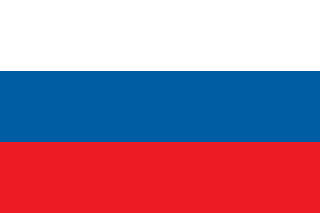 W
WThe Duchy of Carniola was an imperial estate of the Holy Roman Empire, established under Habsburg rule on the territory of the former East Frankish March of Carniola in 1364. A hereditary land of the Habsburg Monarchy, it became a constituent land of the Austrian Empire in 1804 and part of the Kingdom of Illyria until 1849. A separate crown land from 1849, it was incorporated into the Cisleithanian territories of Austria-Hungary from 1867 until the state's dissolution in 1918. Its capital was Ljubljana.
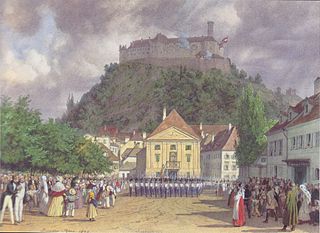 W
WThe Congress of Laibach was a conference of the allied sovereigns or their representatives, held in 1821 as part of the Congress System which was the decided attempt of the five Great Powers to settle international problems after the Napoleonic Wars through discussion and collective weight rather than on the battlefield. A result of the Congress was the authorization of Austrian intervention in the Kingdom of the Two Sicilies in order to quell a liberal uprising.
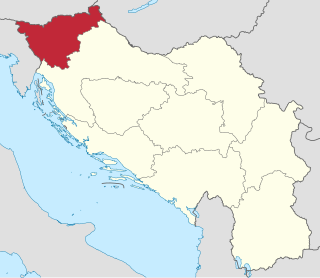 W
WThe Drava Banovina or Drava Banate, was a province (banovina) of the Kingdom of Yugoslavia between 1929 and 1941. This province consisted of most of present-day Slovenia and was named for the Drava River. The capital city of the Drava Banovina was Ljubljana.
 W
WIn classical antiquity, Illyria was a region in the western part of the Balkan Peninsula inhabited by numerous tribes of people collectively known as the Illyrians. Besides them, this region was also settled, in various times, by some tribes of Celts, Goths and Thracians. Illyrians spoke Illyrian languages, a group of Indo-European languages, which in ancient times perhaps had speakers in some parts in Southern Italy. The geographical term Illyris was used to define approximately the area of northern and central Albania down to the Aoös valley, including in most periods much of the lakeland area.
 W
WThe Kingdom of Illyria was a crown land of the Austrian Empire from 1816 to 1849, the successor state of the Napoleonic Illyrian Provinces, reconquered by Austria in the War of the Sixth Coalition and restored according to the Final Act of the Vienna Congress. Its administrative centre was in Ljubljana
 W
WVenezia Giulia, traditionally called Julian March or Julian Venetia is an area of southeastern Europe which is currently divided among Croatia, Italy and Slovenia. The term was coined in 1863 by the Italian linguist Graziadio Isaia Ascoli, a native of the area, to demonstrate that the Austrian Littoral, Veneto, Friuli and Trentino shared a common Italian linguistic identity. Ascoli emphasized the Augustan partition of Roman Italy at the beginning of the Empire, when Venetia et Histria was Regio X.
 W
WMagyarization, after "Magyar"—the autonym of Hungarians—was an assimilation or acculturation process by which non-Hungarian nationals came to adopt the Hungarian culture and language, either voluntarily or due to social pressure, often in the form of a coercive policy.
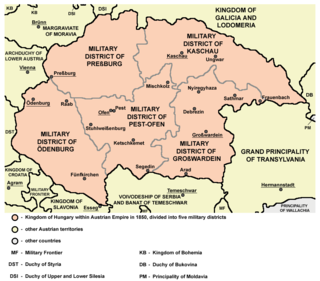 W
WThe Military District of Ödenburg was one of the administrative units of the Habsburg Kingdom of Hungary from 1850 to 1860. The seat of the district was Ödenburg (Sopron). It included parts of present-day Hungary, Austria, Croatia, and Slovenia.
 W
WThe Military Frontier was a borderland of the Habsburg Monarchy and later the Austrian and Austro-Hungarian Empire. It acted as the cordon sanitaire against incursions from the Ottoman Empire.
 W
WOld Slovenes is the term used for a national conservative political group in the Slovene Lands from the 1850s to the 1870s, which was opposed to the radical national liberal Young Slovenes. The main Old Slovene leaders were Janez Bleiweis, Lovro Toman, Luka Svetec, Etbin Henrik Costa, and Andrej Einspieler.
 W
WThe Treaty of Trianon was prepared at the Paris Peace Conference and was signed in the Grand Trianon Palace in Versailles on 4 June 1920. It formally ended World War I between most of the Allies of World War I and the Kingdom of Hungary. French diplomats played the major role in designing the treaty, with a mind to establishing French-led coalition of the newly formed nations. It regulated the status of the independent Hungarian state and defined its borders generally within the ceasefire lines established in November–December 1918 and left Hungary as a landlocked state that included 93,073 square kilometres (35,936 sq mi), 28% of the 325,411 square kilometres (125,642 sq mi) that had constituted the pre-war Kingdom of Hungary. The new Kingdom had a population of 7.6 million, 36% compared to the pre-war kingdom's population of 20.9 million. Though the areas that were allocated to neighbouring countries had a majority of non-Hungarians, in them lived 3.3 million Hungarians – 31% – who were now in a minority status. The treaty limited Hungary's army to 35,000 officers and men, and the Austro-Hungarian Navy ceased to exist. These decisions and their consequences has been the cause of deep resentment in Hungary ever since.
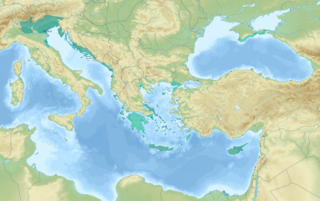 W
WThe Republic of Venice or Venetian Republic, traditionally known as La Serenissima, was a sovereign state and maritime republic in parts of present-day Italy which existed from 697 AD until 1797 AD. Centered on the lagoon communities of the prosperous city of Venice, it incorporated numerous overseas possessions in modern Croatia, Slovenia, Montenegro, Greece, Albania and Cyprus. The republic grew into a trading power during the Middle Ages and strengthened this position in the Renaissance. Citizens spoke the still-surviving Venetian language, although publishing in (Florentine) Italian became the norm during the Renaissance.
 W
WYoung Slovenes were a Slovene national liberal political movement in the 1860s and 1870s, inspired and named after the Young Czechs in Bohemia and Moravia. They were opposed to the national conservative Old Slovenes. They entered in a crisis in the 1880s, and disappeared from political life by the 1890s. They are considered the precursors of Liberalism in Slovenia.